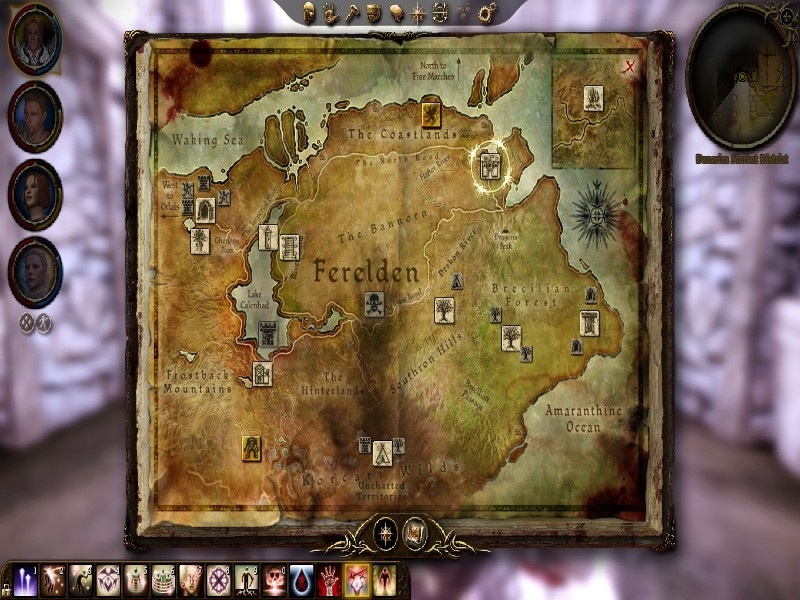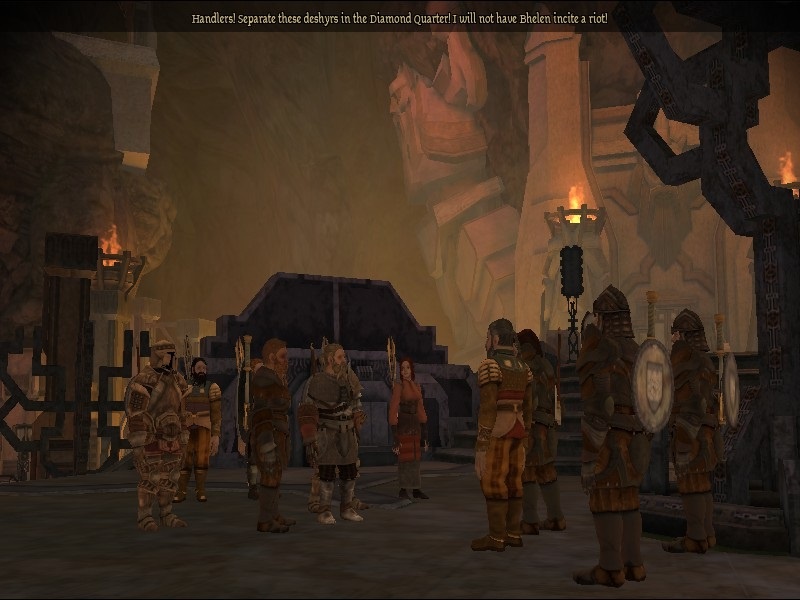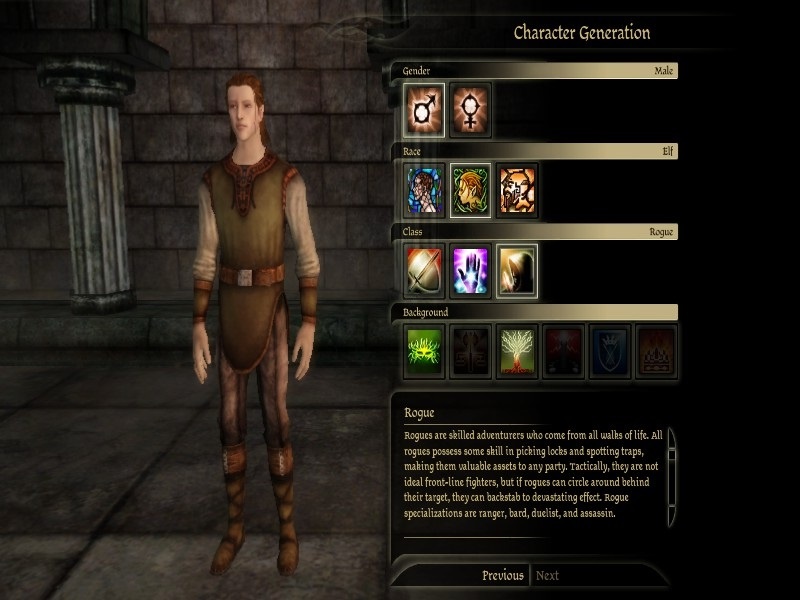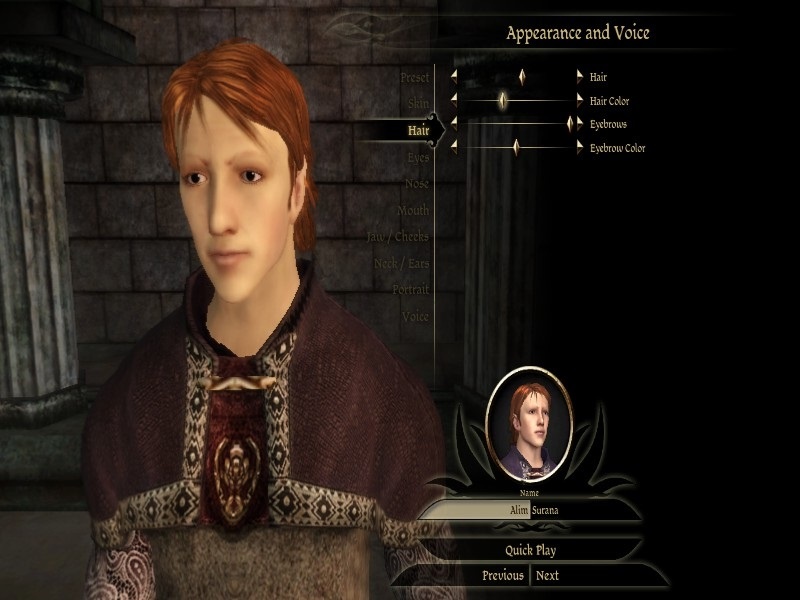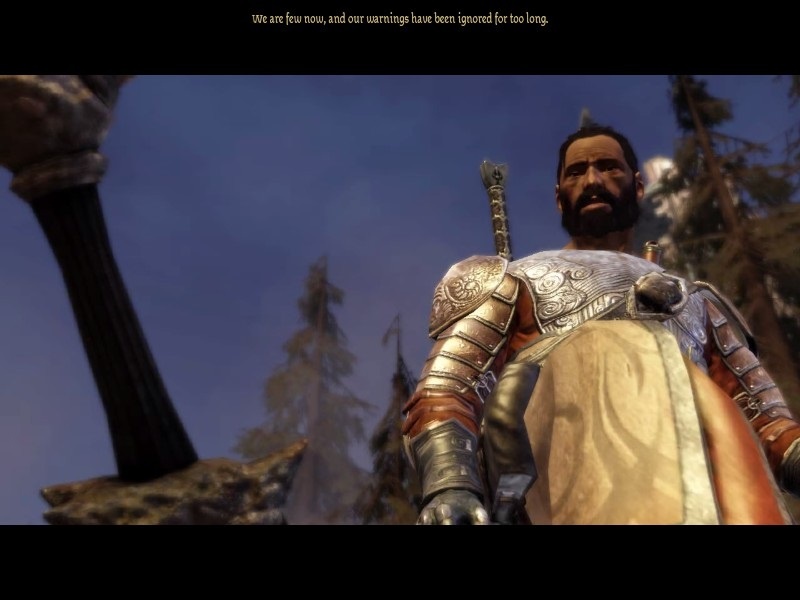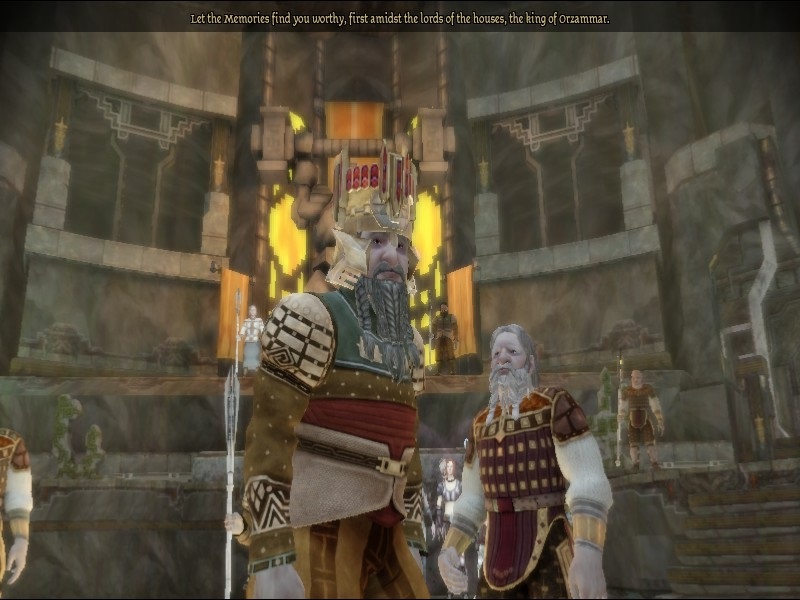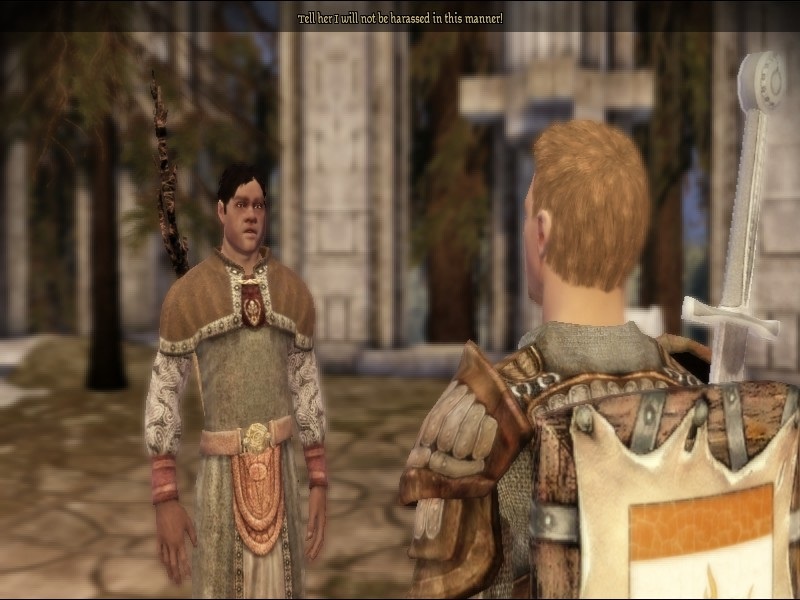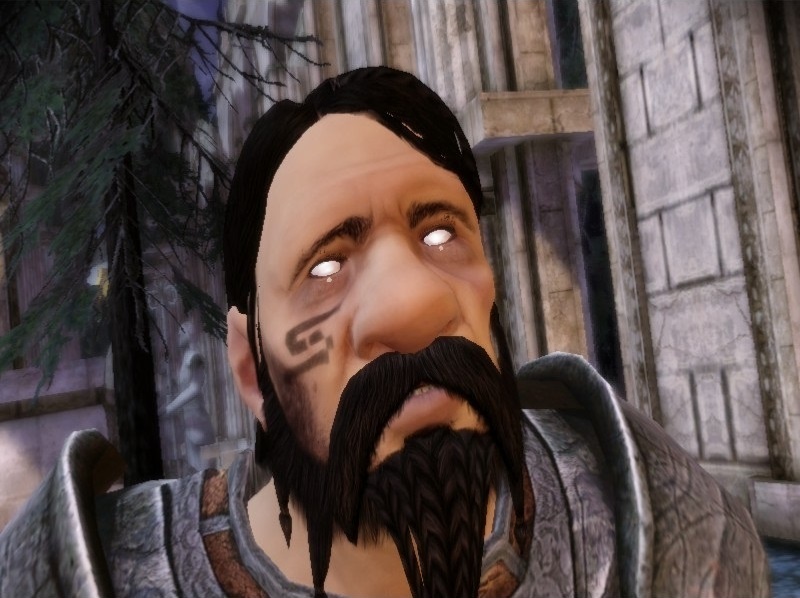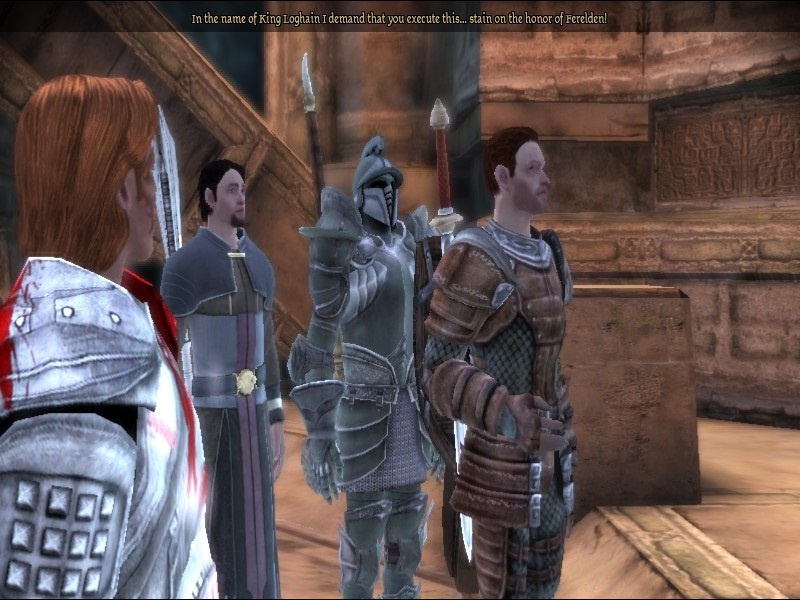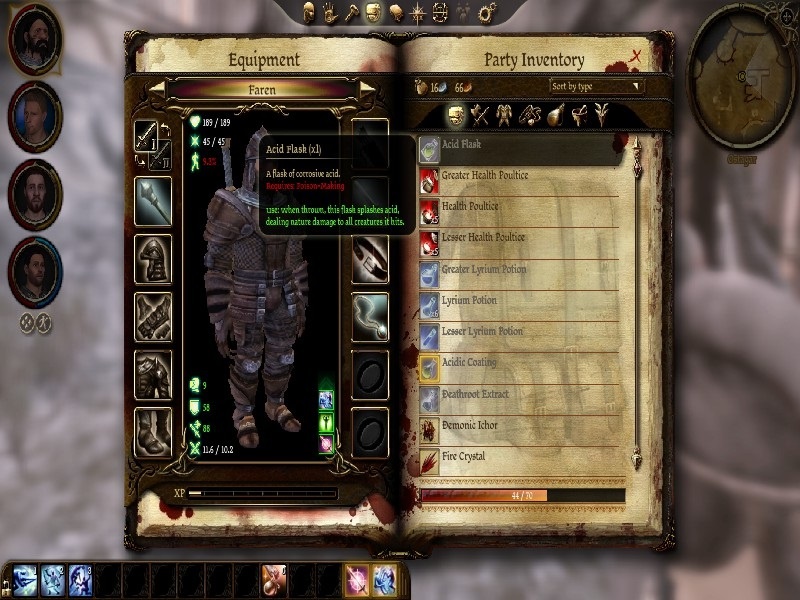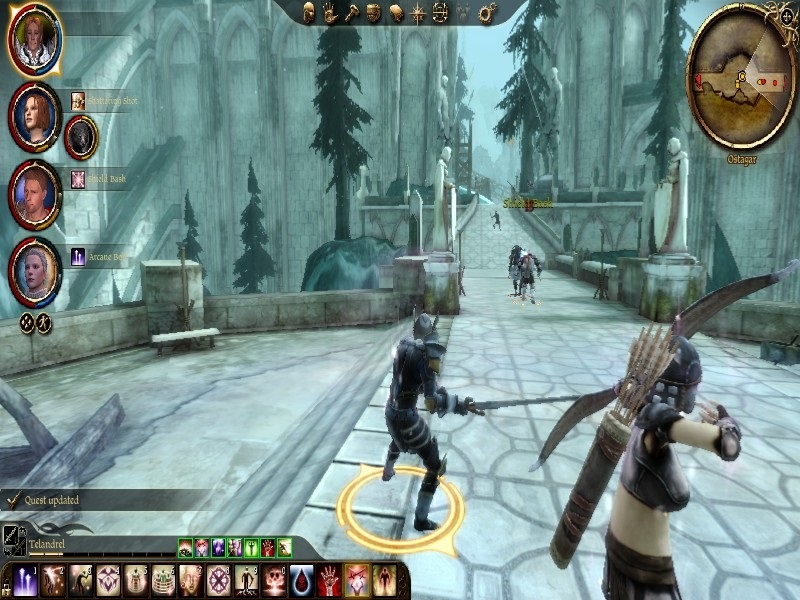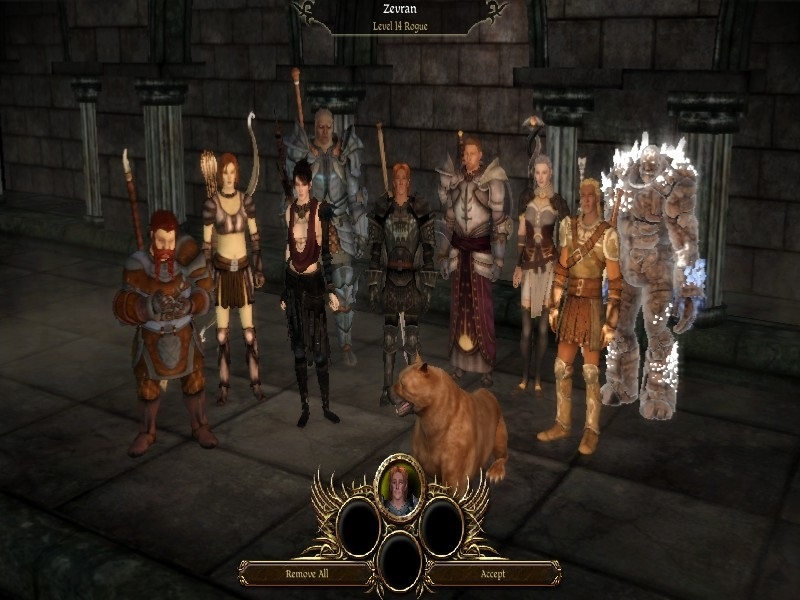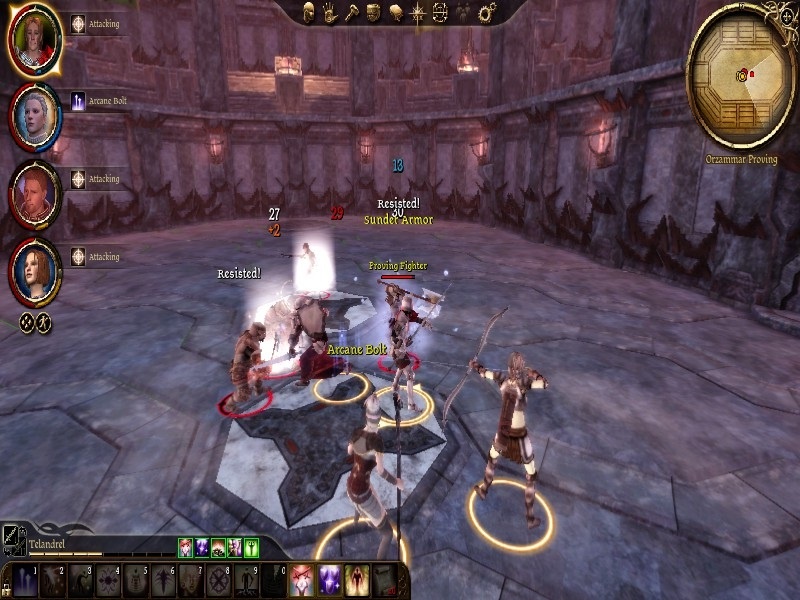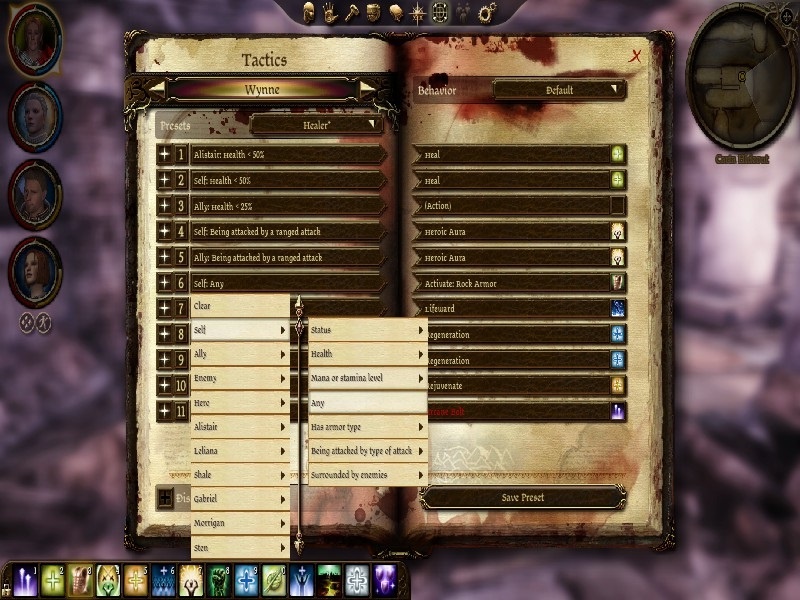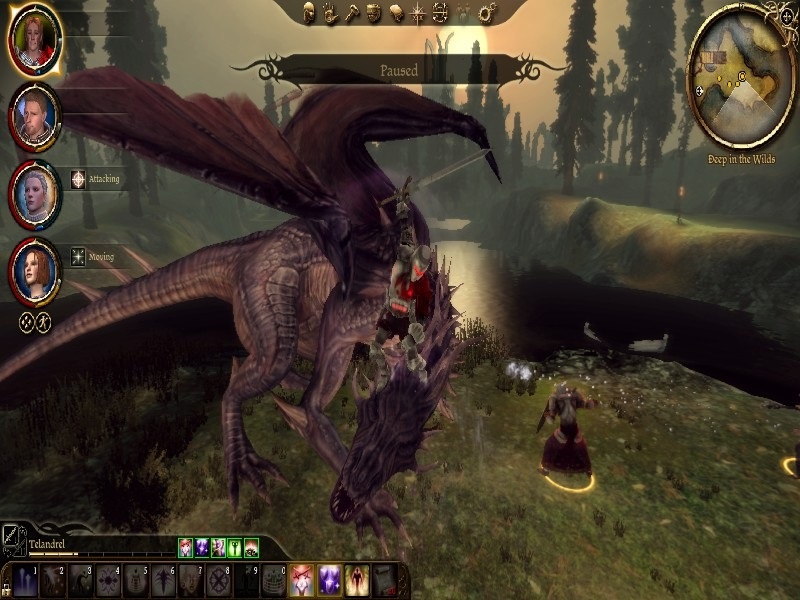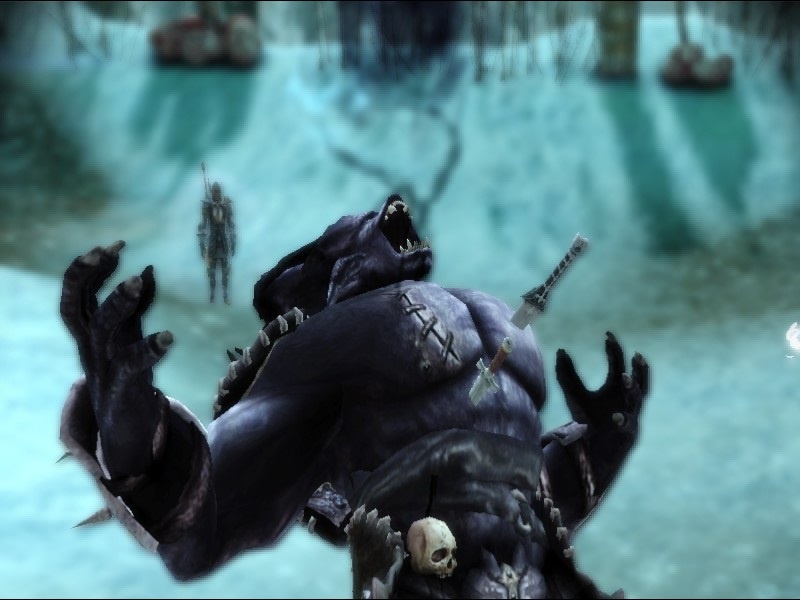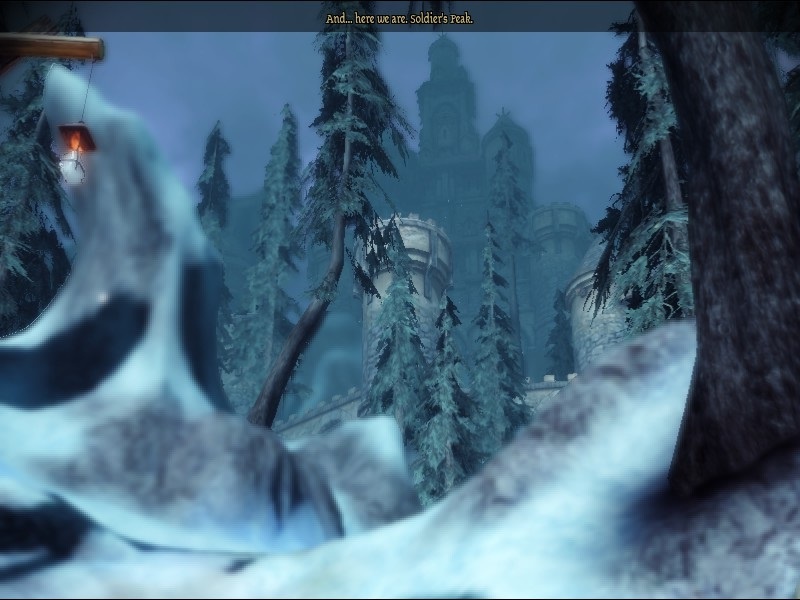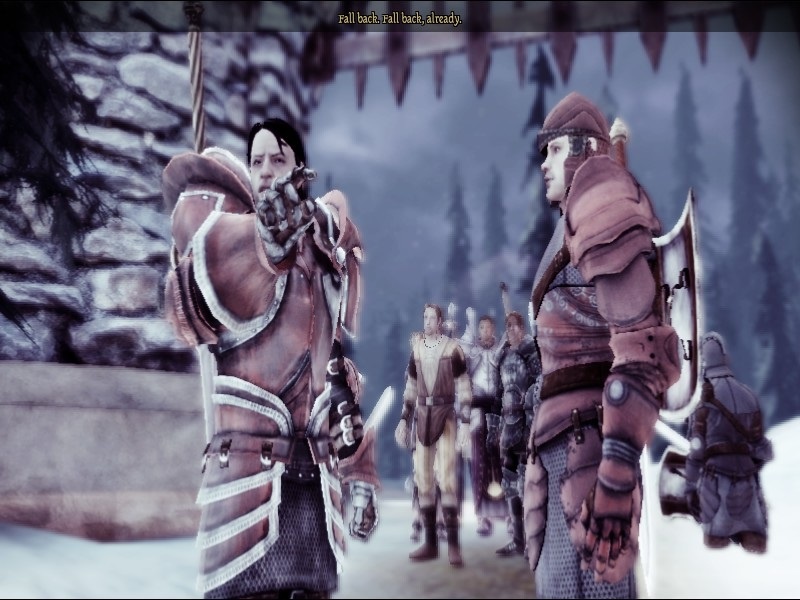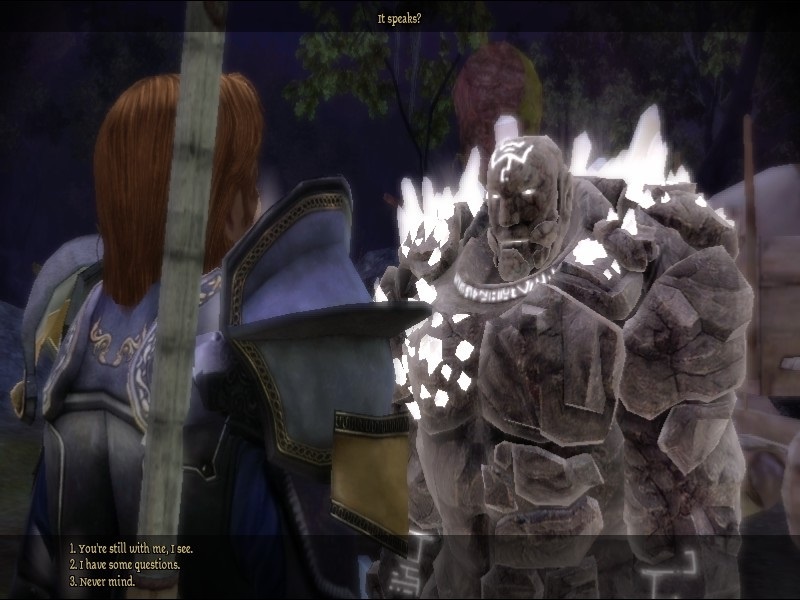Dragon Age: Origins – Ultimate Edition
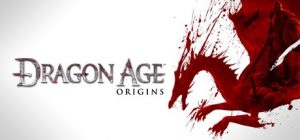
Developer: Bioware
Publisher: Electronic Arts
Released on Nov 06, 2009
To this day, Dragon Age is truly one of my favorite games of all time. I’ve decided to critique Dragon Age: Origins on an unbiased level. I will only cover content derived from the core Dragon Age game and an overview of the playable side stories. Due to its sheer size, I must split this review into two parts, in order to do this game justice.
Genre: Open World Fantasy RPG
In 2010, mom asked me what kind of games I wanted for Christmas. Besides a few Triple-A titles I played for about a week, I also asked for a fairly new RPG to hold me over until next year. Let’s just say, this game makes the Exp grinding tolerable.
It was that fateful day, I got my copy of Dragon Age: Origins. 8 Years later, I achieved 100% on every Dragon Age game for the console and even tried the mobile version people hyped up. I’ve accumulated at least 350 hours in Origins alone.
As much as I love Dragon Age: Origins, it still has some moments I can point to and say, “I wish they changed that.” Did you know that Dragon Age was Bioware’s first Dark Fantasy RPG series they made after their successful debut with Mass Effect?
The History of Dragon Age: Origins
Welcome to Ferelden, a human kingdom trying to rebuild civilization after a war with its neighbor Orlais, a decade ago. The residents are made up of three races including humans. They live by a standard system of the monarchy under King Calen and his wife, Anora.
Dwarves lived underground in the kingdom of Orzammar or traded fine crafts on the surface. They are ruled over by King Aeducan as well. That’s why they follow a strict caste system that either force dwarfs into their lifelong career from birth or throws them into the Casteless dirt under the noble rule.
Then there are the Elves; formerly enslaved by humans and driven away from their nomadic lives aligned with nature. For now, many Elves serve as indentured servants to humans in their cities. But others became followers of the old elven ways, seeking to preserve them. These worshipers are known as the Dalish and refuse to recognize Ferelden rule past their tribal ways.
Each race lives in this country in separate groups, though none are more mysterious than the Grey Wardens. It is rumored that the Wardens are heroes who once saved the land from Blights. It was when tainted beings called the Darkspawn crawled out of their subterranean nests with one goal in mind, absolute genocide.
Character Customization in Dragon Age
At the very start, the Character Creation screen lets you choose between three races and three classes: Your basic Warrior, Rogue, and Mage, RPG classes.
If you are a dwarf, you cannot become a mage because dwarves live underground, thus becoming resistant to magically charged rocks called Lyrium. They are rendered incapable of performing magic.
That being said, depending on the character you choose to become, you are given the choice of what you wish your origin to be. Your origin is meant to constrain you to this fantasy world, to make you feel more invested in how the story will unfold.
You have the following options:
-An elf raised by Dalish Tribals living in the forests of Ferelden.
-A casteless Dwarf Commoner considered worthless to the people.
-An Elf raised in the slums of the Human Capital of Denerim.
-A Human or an Elf raised as a mage in the circle of Magi.
-A Human noble born into privilege in a feudal lord’s house.
-A Dwarven noble prince, second in line to be King of the Dwarves.
Once you choose the Race, Class, and Origin of your character, you can custom create an avatar for the game. The game does provide plenty of options for his/her face and allows you to design your own portrait which will be visible along with your Health and Power bars throughout the game.
Sadly, the Customization in this portion of the game is sub-par at best. The only real place that you get some wiggle room is in the facial details. All races have the same basic body structure and general appearance to cut corners on animated 3D models.
On top of that, the options you are given are not too diverse, so you should expect to see the same hairstyle quite often. The other aspects of character development would be better explained in my section on gameplay mechanics.
Beginning Your Adventure
After your origin is chosen, a number of events unique to your background will play out via teaching you the basics of the game. Regardless of your choices, you will always come across an older Grey Warden named Duncan.
For one reason or another, Duncan deems you worthy of becoming a Grey Warden, promptly recruiting you into his order. But first, you need to accompany him on the front lines of the fight against the Darkspawn at Ostagar, alongside The King’s army.
At this point in time, all the origins come together, such as being a dwarf/elf raised in the slums, or maybe a dwarf/human forced to leave their home. The game has many opportunities that arise, presenting you with a unique perspective on each event.
A prime example of this is the part where as a Dwarven Noble, you are betrayed and banished by your third-born brother, Bhelen, and forced into exile. Later on, the kingdom must pick someone to take the dwarven king’s place.
Your father allegedly chooses between you and your traitorous brother. All of a sudden, you have a better reason to make sure that Bhelen never sits on the throne.
Back to the main plot: Arriving at Ostagar, you will meet the other warden perspectives, followed by a few campers while doing your typical fetch quests/running back and forth to claim rewards.
Once you finish the side quests, you need to retrieve ancient treaties that call for the aid of the Dalish, Dwarves, and Circle of Magi before you return to the campground to join the Wardens. And let me tell you, this is when the Dark Fantasy elements are brought to light.
I won’t say what happens exactly, but an hour in, they lose the battle, resulting in heavy casualties. Only a handful of people, also known as your allies, are the last survivors. In the town of Lothering, you and your party devise a new plan to fight The Blight.
This time, The King’s armies are being led by a Grey Warden hating tyrant, hellbent on hunting you down. Your party decides to pull on the ancient Warden treaties for help in raising a new army to destroy The Blight once and for all.
This is the point where the story opens up to the main event of the game. You can take your time and pursue one of three treaties, try to find allies among the human lords to quell the tyrant, as well as play through the DLC content that is parallel to the core game which I will go over soon.
The Player is supported by many new companions throughout their travels, each having their own entertaining personalities and special quests to follow up on their pasts. However, there is a downside to enlisting a companion which I’ll explain in the “mechanics” below.
Dragon Age Mechanics
Like the vast majority of RPGs, this game at its base is about RNGs and loot rolls. As you level up and explore areas on the map, you will improve your core 6 ability scores which give you access to more powers, skills, weapons, and armor for your arsenal.
The class you chose earlier pretty much determines your character’s fate in the game, like the way his/her origins define how the story is experienced. While the three basic classes for Rogues, Warriors, and Mages inherit the same skill trees, some powers must be unlocked by passing certain events in the overarching story.
Each class has 4 specializations obtained by either finding them in the world or getting companions who already are specialized in those skill trees, unlocked only if you increase their affection toward you. Every 7 levels, you receive another specialization. Each one unlocks more abilities that greatly change your playstyle.
These skill points are spent as a warrior learns to neutralize Magic users, a Rogues learns the art of assassination or a Mage who learns how to wield magic from becoming an Arcane Warrior. As the latter, you equip all kinds of weapons and armor with ease since you don’t need to train anymore.
The only way to gain these abilities is to earn loyalty from your allies. As you spend time with your companions, they will either agree or disagree with your actions. After unlocking enough of their loyalty points, you also unlock companion quests, status buffs, and extra dialogue options, which in some cases can lead to romance options between your character and the other party members.
There are around 10 Companions in the game. However, only 3 of them are able to follow you into battle. This is likely where the game falls short again. Unless you go into Dragon Age already aware of exactly where to go and what to do, you must be extremely lucky to not only find all of them but also keep them in your group.
The first time I had played the game, I completely missed a fairly important character just because I forgot to go to a bar, and then later, I was forced to kill an ally because they didn’t have enough loyalty towards my character.
As you make headway on your adventure, some allies will turn on you should you contradict their moral compass or get thrown into an unexpected story event woefully unprepared. Not only that, some companions are outright easy to miss, which truly does take away from the overall game.
Next comes the actual combat; using your basic attacks and powers to best the swarming enemies. The game takes on a tactical based real-time battle ring that can be paused and surveyed to conduct strategic fight sequences, keeping your team on the winning side.
On lower difficulties, this fighting system is basic enough to let most casual gamers advance without issue, for the most part. However, for anyone who wishes to challenge their tactical side, the higher difficulties are bound to push their limits. The enemy’s health is displayed in bars. The golden circle shows the position of your allies.
While you can freely control your character, you do have the ability to switch to your companions and pick their moves instead. When you aren’t controlling a character, the CPU will take over for you on a fairly sophisticated tactics menu. Pay attention to the damage output and enemy resistances for a quick sweep.
With enough levels dedicated to the NPC Characters, you need to take your time in learning how everything works. The tactics menu gives you free reign to adjust the autopilot system in order to effectively control your entire party, easily on the go.
Believe it or not, the combat menu is deceptively tricky to navigate. Standard combat is a joke in the sense that you can trample over enemies as if you were asleep. It is honestly a little repetitive but not nearly as much compared to other games. I guess grinding in RPGs is a staple of the genre. The tricky part comes into boss fights.
The difficulty does spike out of nowhere and will hit you like a truck if you aren’t ready to fight. Fortunately, they only occur at a handful of events in the game including basically any situation in which you have to face a full-sized, fire-breathing dragon.
The last few battles are not particularly memorable. It’s not that I don’t like them, it’s just that they get thrown on the backburner unlike the onslaught of hostile monsters. The dragons do appear menacing to an average adventurer nonetheless.
As you level up, you will gain skills in crafting, survival, persuasion, tactics, stealing, and combat. Persuasion is especially helpful in conversations where you convince other NPCs to take an alternative course of action, earning you 100% on some quests.
I’ve already explained what Tactics are good for. Combat skill is essential for Non-mages to do damage in a melee fight, survival is practically useless besides when you do a side quest or two, in which it does give a negligible buff to your stats resistance. Stealing doesn’t matter as much when you can get money from looting bodies.
Last on the list is crafting, which in my opinion, can be legitimately helpful if you put in the effort, especially on a higher difficulty. You receive a few more items to triumph over tougher fights, but to be honest, you can get enough items from shops or loot drops to negate any really need to craft.
There are bits of extra content that are nice to collect, like a set of Mass Effect inspired Blood Dragon Armor and two sets of gifts to improve relationships with your allies. This makes maxing out their loyalty a walk in the park. Besides these, there are 3 other much more notable pieces of extra content that enhance the core game.
Return to Ostagar
Return to Ostagar lets the player teleport to the infested battlefield of the failed attempt to halt the Darkspawn hoard, in an attempt to not only retrieve some of the king’s items of sentimental value to the player but also meet some of his companions that were present at the battle.
In Ostagar, you can experience the true weight of their loss and the arrogance you had to think that you could win. It is without a doubt, one powerful piece of DLC if you are engrossed in the lore of Dragon Age and want to connect even further with your character’s plight.
If you, for some reason, aren’t interested in the story, there’s also a fairly challenging boss fight to try your hand at. The items dropped by this giant troll aren’t half bad to equip yourself with. Overall, it’s just additional content meant to entertain hardcore gamers, but I had hoped it was longer or had more trials.
Warden’s Keep
You may not be impressed by Levi Dryden, who is hanging around your base camp asking for your help. But he is actually an important NPC, who is a descendant of a former Grey Warden commander. In fact, his main goal all along is to liberate his family’s keep hidden away at the Soldier’s Peak.
Continuing forwards, little did you know, the keep is haunted by the sins that permeated the stronghold decades ago. Once you are inside, you (and Levi) learn more about the history of the Wardens, being forced to confront the embodiment of the Sins of the Keep.
Once the peak is cleared out, Levi invites his family of tradesmen to the Peak’s courtyard. These guys are a valuable resource for your party as they’ve set up a nice shop for endgame level loot on top of the loot you receive from the clearing of the keep.
There are a few other twists and turns in the Origins timeline, but at its core, this is enough for most people to understand what kind of fantasy tale Dragon Age portrays. This Content is solid and very nice to play through, if not a bit short-lived.
The Stone Prisoner
This content is an add-on to the core game and it clearly has the most work put into it, going far beyond the side dungeon DLCs we’ve come to expect. The Stone Prisoner contains a fully integrated character offering a whole new backstory and playstyle to them. That’s right, Shale the snarky Golem has no gender.
You get to experience an entertaining narrative and dungeon that you need to go through to acquire the Shale. The dungeon contains an interesting puzzle, as well as some standard darkspawn, but the best take away for this content is Shale itself as they are a defender of the Dwarven Thaigs.
Shale is a sarcastic, moody, and sometimes stubborn, magic crystal enhanced stone warrior, who formerly belonged to a mage living in Honnleath. This golem works just like other companions, except for using a different set of equipment, right down to having a strange backstory for the player to learn about.
Conclusion
Dragon Age Origins is easily my favorite game. I’ve done multiple playthroughs using different classes, more so than any other game. The main reason being that Origins has high replay value as shown by its branching storylines.
Whereas some games make you feel like the same person going back through a second run, only changing your answer to previously seen dialogue choices, Dragon Age: Origins is essentially centered around how you build your character, becoming a different game each time.
Dragon Age: Origins has just the right amount of challenging combat which is easy to pick up but not too complex. Being able to play it on PC expands on the RPG-based strategic elements rather than simply being another 3rd person RPG.
